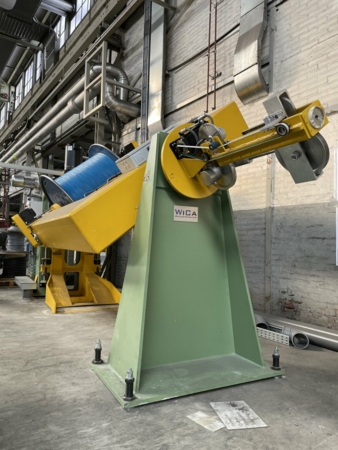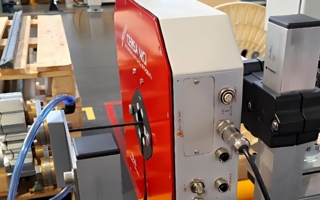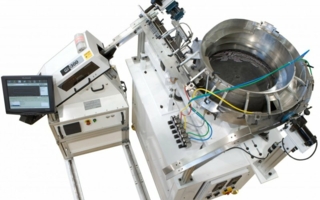20/03/2024 – Quality management / Stranding
Measuring tensile forces in rotating machines
Whether for cable stranding machines, wire drawing machines, winding, braiding and taping machines and many other individual applications, Tensometric devices are used by the most renowned manufacturers worldwide to reduce downtimes and increase throughput.
Managing Director Markus Kolossa: “One of our strengths is measuring tensile forces in rotating machines!” Stationary and hand-held tensile force measuring devices from Tensometric are characterised by high measuring accuracy and durability.
A question that is often asked is how they make reliably measurement possible even low tensile forces in a rotating machine such as stranding machines or taping machines. With a radial force transducer, the roller weight is also measured during rotation. This produces a sinusoidal output signal. At higher speeds, the centrifugal force increases and the zero point changes. This physical effect can only be almost negated by complex electronic compensation.
Other systems on the market are installed in stranding machines offset by 90° to the centrifugal force. The measurement signal from the resulting force on the sensor is then low. The installation position in the machine is therefore clearly limited. It can be seen that the measured force is only a fraction of the tensile force. Particularly small tensile forces cannot be reliably measured using this method.
This is where the “CF-Comp-XX” series developed and patented by Tensometric comes in.
Kevin Kress, authorised signatory, says: "Tensometric has developed a mechanical compensation of the measuring roller that allows us to install the sensor in any position in a rotating machine. This gives machine designers plenty of scope for new ideas when retrofitting machines or developing new ones."
It is possible to perform static compensation for low centrifugal forces or dynamic compensation for high centrifugal forces. For this purpose, the measuring roller is installed at Tensometric Messtechnik GmbH in order to compensate for the centrifugal force of the measuring roller and the position of the sensor in the machine in a rotary simulator.
To measure the tensile force on the moving material, a ball-bearing roller is mounted on the bearing axle. This is positioned in the machine in such a way that it deflects the material to be measured at a defined angle. Wrap angles of the material to be measured around the roller of 3° to 180° are possible.
The resulting radial force on the measuring axis is recorded by the transducer and output as an analogue value. When ordering, the nominal load must be selected according to the radial force determined. Nominal loads from 10N to 1,000N are possible depending on the design.
The permanently installed, programmable electronics are set at the factory to the desired output signal of the nominal load. The zero point and calibration can be readjusted via a programming cable if required.
The sensors provide an analogue output of 0V to 10V or 4mA to 20mA corresponding to 0% to 100% of the nominal load. This signal can either be fed to the brakes (in the machine) as an actual value or sent to the operator via slip rings, radio signals or bus signals.
wire 2024, hall 9 booth F 49
Tensometric Messtechnik GmbH
Derken 7, 42327 Wuppertal/Germany
Contact person is Kevin Kress
Tel.: +49 202 7052149-11
info@tensometric.de
www.tensometric.de
Figure 2: Installation of radial force sensors in the rotating stranding machine
A shows the installation of a transducer in the stranding machine
B shows the situation at a measuring point
C The force diagram illustrates the force ratios at a measuring point
1 = Sensor with mounted measuring roller
2 = Direction of rotation
4 = stranding point
5 = Material to be measured
6 = Wrap angle of the material to be measured around the measuring roller
8 = Force diagram
9 = Resulting force in the measuring direction of the transducer*
12 = Centrifugal force*
*) The force measured by the transducer is shown by arrow 9.
About Tensometric
Tensometric Messtechnik GmbH is a family-run company that has standardized in measuring the tensile force of cables, wires, yarns and tapes for more than 35 years. Quality assurance is a key factor in being able to produce consistently high quality. This is exactly what Tensometric devices are made for.





